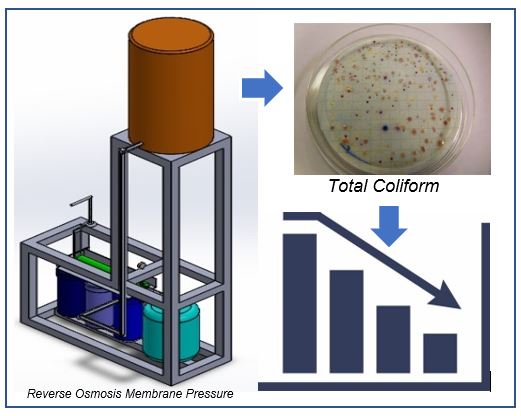
Water is the most important substance. Drinking water in the industry comes from raw water and is treated through a heating process. The results of laboratory tests on raw water used for drinking water are 41 MPN/100ml, so it is necessary to process raw water into drinking water using Reverse Osmosis (RO) membrane technology. The purpose of this study is to determine the difference in the decrease in the total amount of Coliform in drinking water based on variations in water pressure on the Reverse Osmosis membrane in the canteen of X Industry. This type of research is an experiment with the design used is pre-test post-test without control, the sampling technique used is grab sampling, and the total sample is 36 samples with a volume of 3600 ml. The decrease in the total number of Coliforms was analyzed using univariate and bivariate tests. The results of total Coliform in drinking water after treatment with Reverse Osmosis membranes are the average results for a pressure of 1 bar is 0 MPN/100 ml, a pressure of 1.5 bar is 2.81 MPN/100 ml, and a pressure of 2 bar is 5.3 MPN/100 ml. This study concludes that there is a difference between the pressure of 1 bar, 1.5 bar, and 2 bar on the decrease in the total Coliform content in the canteen of X Industry with a p-value of 0.001, and the most effective pressure to reduce total coliform in drinking water in the canteen of X Industry is a pressure of 1 bar with a 100% percentage. Suggestions for further research to carry out the saturated condition of the Reverse Osmosis membrane.
Total file downloads: 9